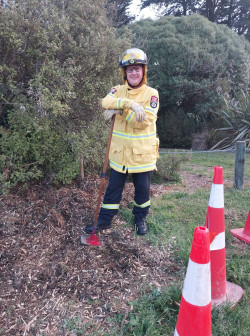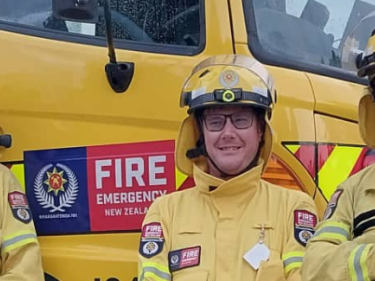I’ve never let my disabilities define my abilities’
29 Whiringa-ā-rangi 2022
James Marks is a volunteer firefighter with the Waikuku Beach Volunteer Fire Brigade. He is also determined, talented and neurodiverse, having been diagnosed with High-Functioning Autism and mild Attention Deficit Hyperactivity Disorder. He’s a man on a mission and there’s no stopping him.
As a young boy, James struggled to keep up in class, until his diagnosis at eight years old and then everything changed.
“When I understood what was going on, it all clicked. I understood why I had trouble retaining things, so I developed strategies on how to remember information. I still use those same strategies today,” said James.
|
Firefighting has always sparked James’ interest. His very first memory is from pre-school when he sat in the cab of a visiting fire truck. His uncle was a volunteer so from age five James would shadow him at weekly training, cleaning the truck and soaking it all in. It was when he became old enough to join, that the doubts started creeping in. “I thought to myself, ‘I have autism – I can’t do this’ and my first experience wasn’t that great. But then I talked to the Fire Chief at Waikuku. I told him I had autism and he said that didn’t worry him. “ |
 |
Eight years later, James is working on his Rural Crew Leader qualifications and mapping out a career progression plan to achieve his ultimate goal of attaining the rank of Chief Fire Officer. He is helping create a Diversity and Inclusion work group with the Canterbury District and has been appointed to Kia Toipoto Advisory Group.
“I’ve always wanted to have an active role helping in the community. I hope if others out there who are neuodiverse see that I can do it, they’ll believe they can do it too. The neurodiverse community is full of talent that’s been undervalued for quite awhile. I really hope more people like me join our organisation.
“Fire and Emergency is working hard to be a place where you are accepted and I’m proud to be part of the organisation, helping that to happen. I thought I couldn’t do this, but I perservered and worked my through my goals, with the amazing support of my girlfriend, family, friends and the brigade. Eight years down the track I’m on my way to where I want to be.”
James’ advice for those with neurodiversity looking to volunteer
|
Neurodiversity is still a relatively new term, but not one we should be scared of. It’s really about the way people’s brains work, and everyone’s brain works differently, which is great as it means we all bring different skills and strengths to the table. Someone in your own whanau may be neurodiverse, or you may be neurodiverse yourself.
These links will help you build a better understanding about what it all means:














